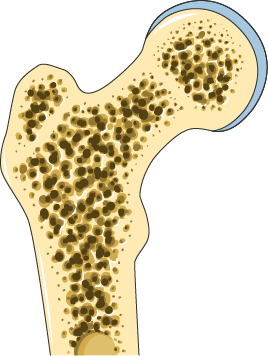Home / Conditions / Osteoporosis
Osteoporosis

Osteoporosis is the gradual weakening of bones due to bone mass being lost faster than it is created. Brittle, osteoporotic bones are at high risk of fracture – particularly the spine, hips, and wrist. In addition to medication and adequate nutrition, weight-bearing physiotherapy exercises can fortify already weak bone and help reduce the risk of fracture in a safe, controlled setting.
Early stages of bone loss do not typically present symptoms. Your first indication of osteoporosis may be a fractured bone in the hip, spine, or wrist after a fall.
Indications of later-stage osteoporosis may include:
- Back pain due to a collapsed or fractured vertebra
- Loss of height
- Hunched or stooped posture
- A curved backbone
Bone thinning is a natural process as we age. However, various factors may increase one’s risk of developing osteoporosis:
- Post-menopausal women are at higher risk due to lowered production of estrogen post-menopause
- Having a parent or sibling with osteoporosis may indicate a heightened risk, particularly if the family member fractured a hip or related bone
- Low calcium intake contributes to general bone deficiency, ultimately increasing risk of osteoporosis
- Some medications such as Prednisone and other corticosteroids can impede bone development
Exercise, specifically weight-bearing aerobics and strength-training, builds strong, healthy bones and muscles. These are valuable tools in the prevention and treatment of osteoporosis. However, it is essential to practice these exercises in a safe and controlled environment.
Our physiotherapists at Action Potential Rehabilitation are committed to ensuring your safety and comfort as you exercise with osteoporosis. To learn more about our services and treatments, visit the next page.
Image references:
- Os. (2017, March 14). Retrieved July 12, 2020, from https://smart.servier.com/smart_image/os-2/
This website provides general information about our services and conditions treated. It is not intended to be used for self-assessment or treatment, and is not a substitute for an individualized treatment plan developed by a registered physiotherapist.
By the Action Potential Rehabilitation Staff
Page last reviewed: June 2, 2023
